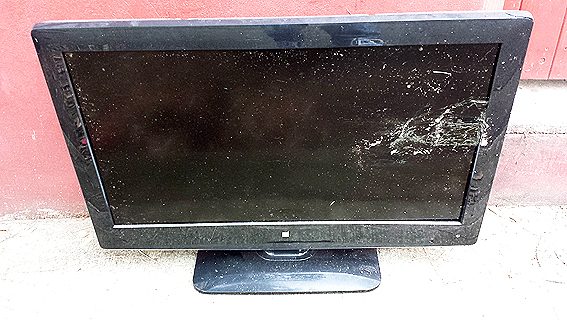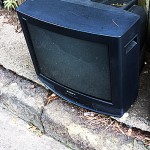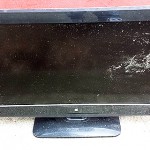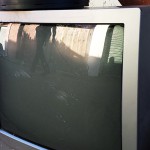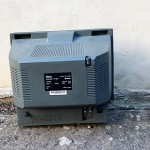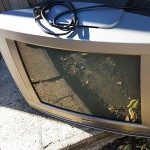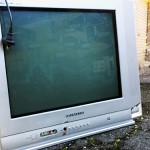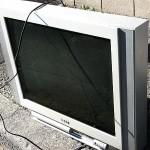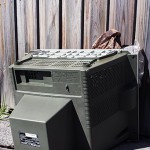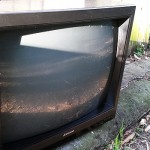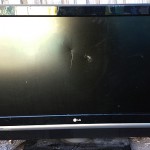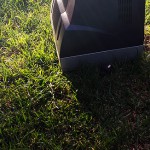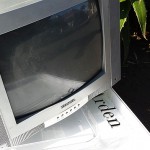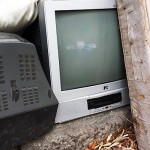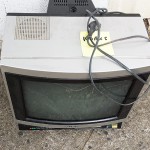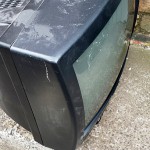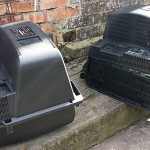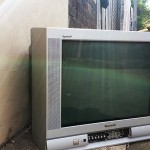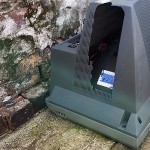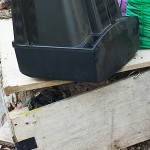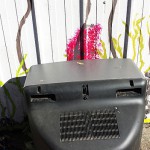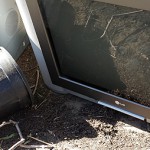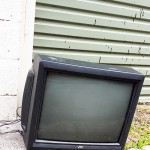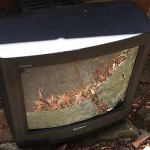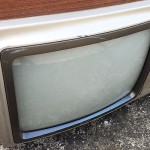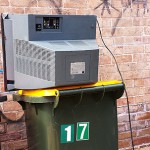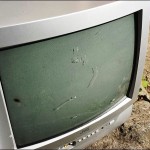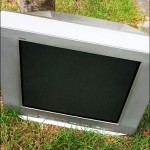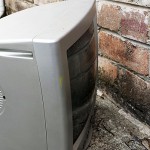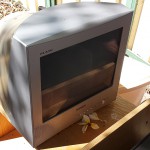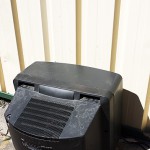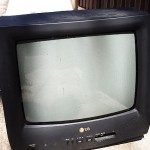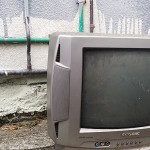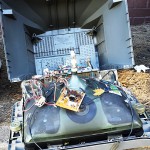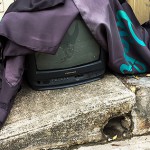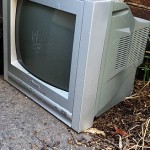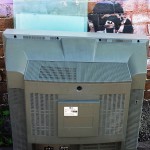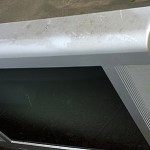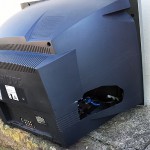To mark the occasion of having notched up 50 dead televisions, it seems appropriate to include this much rarer item found on the street – a dead flat screen. To date, all of the dead televisions unearthed have been of the boxy CRT variety, tubby tellies turfed out to fend for themselves as part of the inexorable shift from tube to panel. Flat screens are the new boys on the block – slimmed down, smooth-faced, filling the air with their strange modern argot of liquid crystals, plasma and light emitting diodes.
When I first started recording dead televisions two years ago, I wrote that we could expect to see a lot of them being discarded as the switch to digital-only transmission approached. That moment is now almost upon us.
And certainly that expectation has proven to be the reality with an almost unrelenting stream of cathode carcasses lining the laneways. In contrast, there have been no flat screens at all – until this one.
Does 50 dead televisions seem like a lot? Not many? Bear in mind that this is only one small area of one suburb, and that the half-century represents a minute fraction of all the dead televisions that could have been collected. Many more go unrecorded, for various reasons, and yet more disappear unnoticed, lost and forgotten, never to seen again. The total number of casualties must number in the hundreds, perhaps thousands.
Eventually, of course, the old tellies will die out completely, replaced entirely by their sleek soul mates (some estimates suggest that over 90% of local households have already switched over to new digital televisions). The laneways will then belong to the flat screen.
In many ways then, this dead one is a harbinger of what is to come, a prophet ahead of its time. The future starts here.
